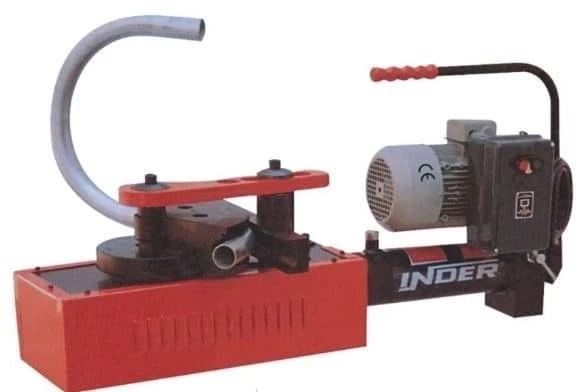The pipe bending machine is a tool to process metal pipes and profiles that need to be cold bent. Stretching occurs during the bending process. There is no requirement for coolant during the bending operation. To improve the quality of bends and increase the lifespan of the pipe bending dies, it may occasionally be necessary to use drawing oil to lower the resistance between the pipes and the pipe bending tools. For numerous industries, including furniture, building, lighting, many forms of transportation, and others, cs are essential.
Things to consider before purchasing a hydraulic pipe bending machine
Technology
We’ll only touch on a few benefits of incorporating this technology into a hydraulic pipe bending machine. If a customer agrees, the manufacturer may connect remotely to their machine to perform software upgrades and find any anomalies without going to the machine’s location. Among many other helpful functions, the system may notify customers when preventive maintenance has to be done.
Structural rigidity and agility
The machine’s weight compared to those of other brands gives a sense of its construction. Some of our products weigh roughly twice as much as our rivals. These pipe benders can operate around-the-clock; they are not do-it-yourself devices. They are made of durable materials, operated by a helical-cut planetary gear system, and tempered in wear-prone places. Another factor to consider is the rotational speed. It can reach 4.5 rpm for more aggressive production, which is frequently more than twice as fast as machines of a similar type now available on the market.
Precision and quality of the machine
After the model and configuration are chosen, it is vital to look into the hydraulic pipe bending machine‘s manufacturing quality, including the machine’s structure, the quality of its motor (servo motor), the quality of its rack and pinion, its guide rail, and its accuracy.
Hydraulic pipe bending machine
Curve finishes and thicknesses
Most tube and pipe benders can only bend extremely thick-walled pipes with a minimum thickness of 10% of the pipe’s predicted diameter. For instance, a 3.5 or 4 mm wall thickness typically ensures a decent curve on a 40 mm pipe. The hydraulic pipe’s original counter-shape construction ensures a good finish even with a thin-walled pipe. A 40 mm pipe might have a minimum thickness of 1.5 or 2 mm. The price of the raw material is greatly reduced as a result.
Durability of the tools
The design and substance of the pipe bending machine tools are also crucial. A decent tool can help you achieve a flawless bend, guarantee the quality of the bend, and reduce your future costs.
Opening automatically
To more easily release the piece without modifying the grip, the bending carriage travels to the right or to the left, depending on the direction of the curve. This unique method can finish things significantly faster.
Hydraulic Pipe Bending Machine
The hydraulic tube bending machine is another name for the hydraulic NC pipe bender. The majority of the time, it is employed to process products with a single bend or several bends in the same plane. A hydraulic cylinder controls the bending arm, while several solenoid valve sets are used to regulate the output flow of the hydraulic cylinder to control the bending speed. The feed and rotation are controlled manually.
Advantages:
- The cost is reasonable.
- The touch screen is stable and simple to set up and use.
- The fundamental bending specifications can be met.
- The maintenance is comparatively easy.
Working of a Pipe Bending Machine
The pipes or profiles are bent around the center bending die during the pipe bending operation. The main shaft is where the bending die is mounted. The clamping die clamps the pipes to stop them from moving. To prevent wrinkling, flatness, thinning, and other defects when the tube is bent, the pressure die applies the correct amount of pressure to the pipes, and the mandrel fills the workpiece’s cavity. The workpiece is put into the machine and rotated after the shaft has bent the tube while wound on the bending die. You merely need to swap out the pipe bending tools for new ones if you wish to acquire different bending radii.
Conclusion
The hydraulic pipe and tube bending machine applications include handrails, handrail elbows, wall returns, furniture frames, roll cages, and many more. In addition to these hand-operated hydraulic pipe and tube benders, more expensive hydraulic pipe benders are available. They are capable of producing pipes and tubes with precise tolerance requirements. Additionally, they are more effective at processing difficult materials.
Ultimately, the shop’s budget, application, and requirements will determine the best tube bending machine. On the other hand, although hydraulic pipe benders are a little expensive and powerful, manual benders are less expensive but are unable to match the demands for high precision and superior quality. However, they are dependable and simpler to maintain for small-scale manufacturing. IndustryBuying has the best offers on pipe bending machines.
0



